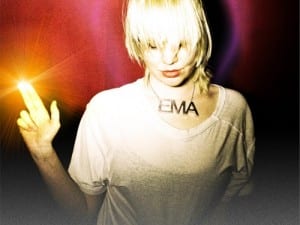Riot Grrrls celebrates a plethora of loud and adventurous paintings by female artists. The exhibition responds to the sexism that pervades the creative world, from the higher prices gained at auction by pieces from male practitioners, to the disproportionate representation in galleries. Until 18 June, MCA Chicago seeks to reset this balance. Riot Grrrls presents a challenge to the traditional “boys club” sensibility, that in both a historical and contemporary context, guides the industry. The figures included address this inequality through innovation and artistic mastery.
The exhibition takes its name from a subcultural movement that originated in the early 1990s, a group that combined punk, politics and feminism. It served as a music medium through which women expressed themselves as freely as men, with bands from the genre often confronting issues such as racism, sexuality and feminine empowerment. Taking the current conditions of sexism as a starting-point, the gallery has consciously been collecting the boldest and most exciting compositions from 10 pioneering painters, both established and emerging.
Highlights include Charline von Heyl’s Alastor, consisting of bold hues and handprints, takes inspiration from the developing art scenes in 1980s Germany. She was once removed from a class by Gerhard Richter, an incident which drove her toward Martin Kippenberger and Albert Oehlen, who dismissed Ritcher’s ideas, and moved her practice to a consideration of inequality. Sailor See Green, from Judy Ledgerwood, challenges the preconceptions of painting, using bright, visually striking colour combinations in gestural, repetitive marks.
As a nexus between abstract expressionism and Pop Art, Joyce Pensato’s mural Silver Batman II confronts visitors with the exaggerated features of figures drawn from popular culture. The red, black and white palette of Mary Heilmann’s Metropolitan evokes both a sense of the style of the 1950s, alongside the advent of punk in the 1980s. These two contrasting elements reference the time periods from which she takes inspiration. Other works from Molly Zuckerman-Hartung and Amy Feldman represent the continuing cultural relevance of the Riot Grrrl ideologies, and a consensus of discontent with the contemporary art landscape.
Riot Grrrls, MCA Chicago, until 18 June. www.mcachicago.org
Find us online @Aestheticamag for contemporary art and culture.
Credits
1. Riot Grrrls (installation view).




